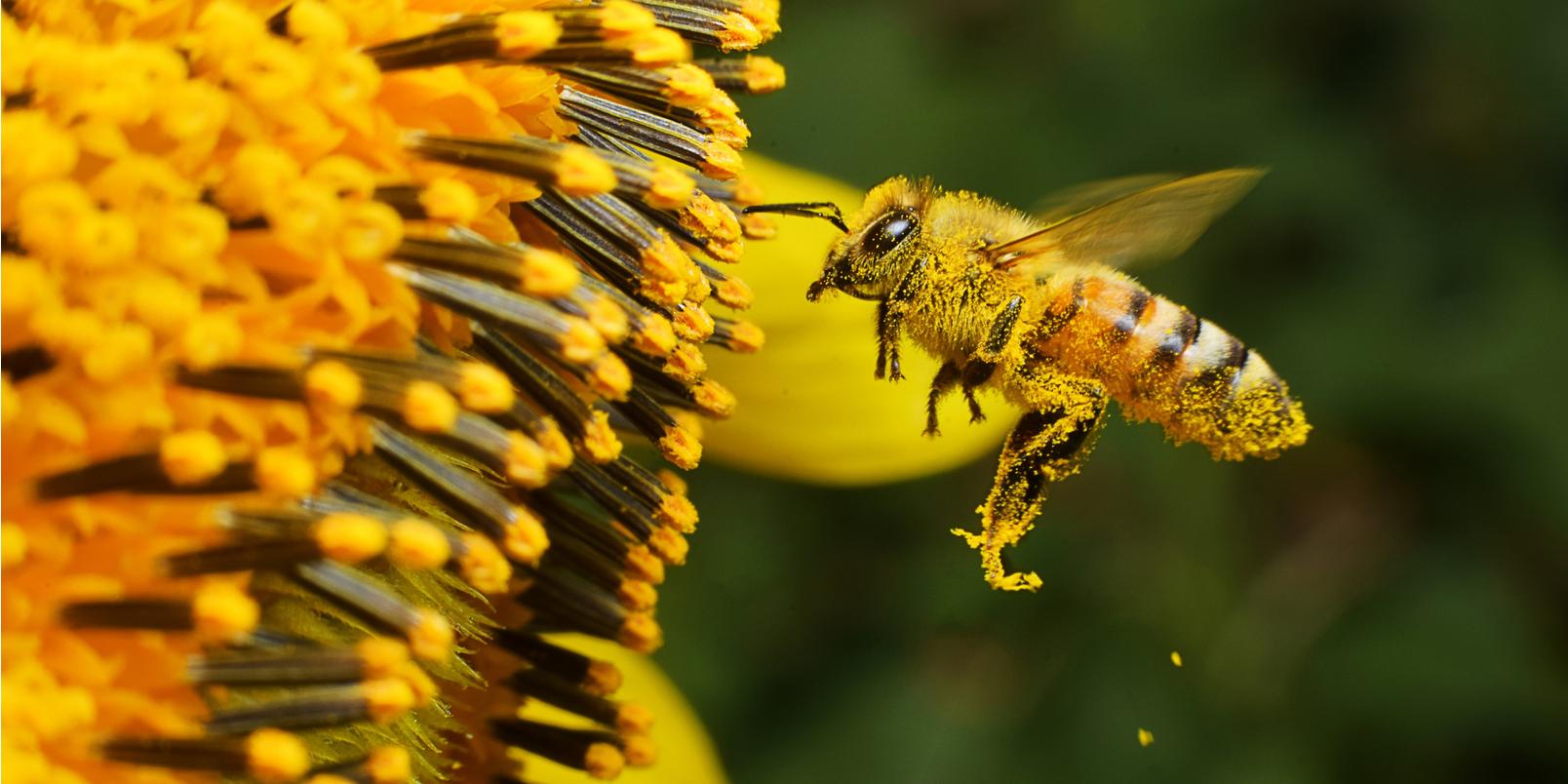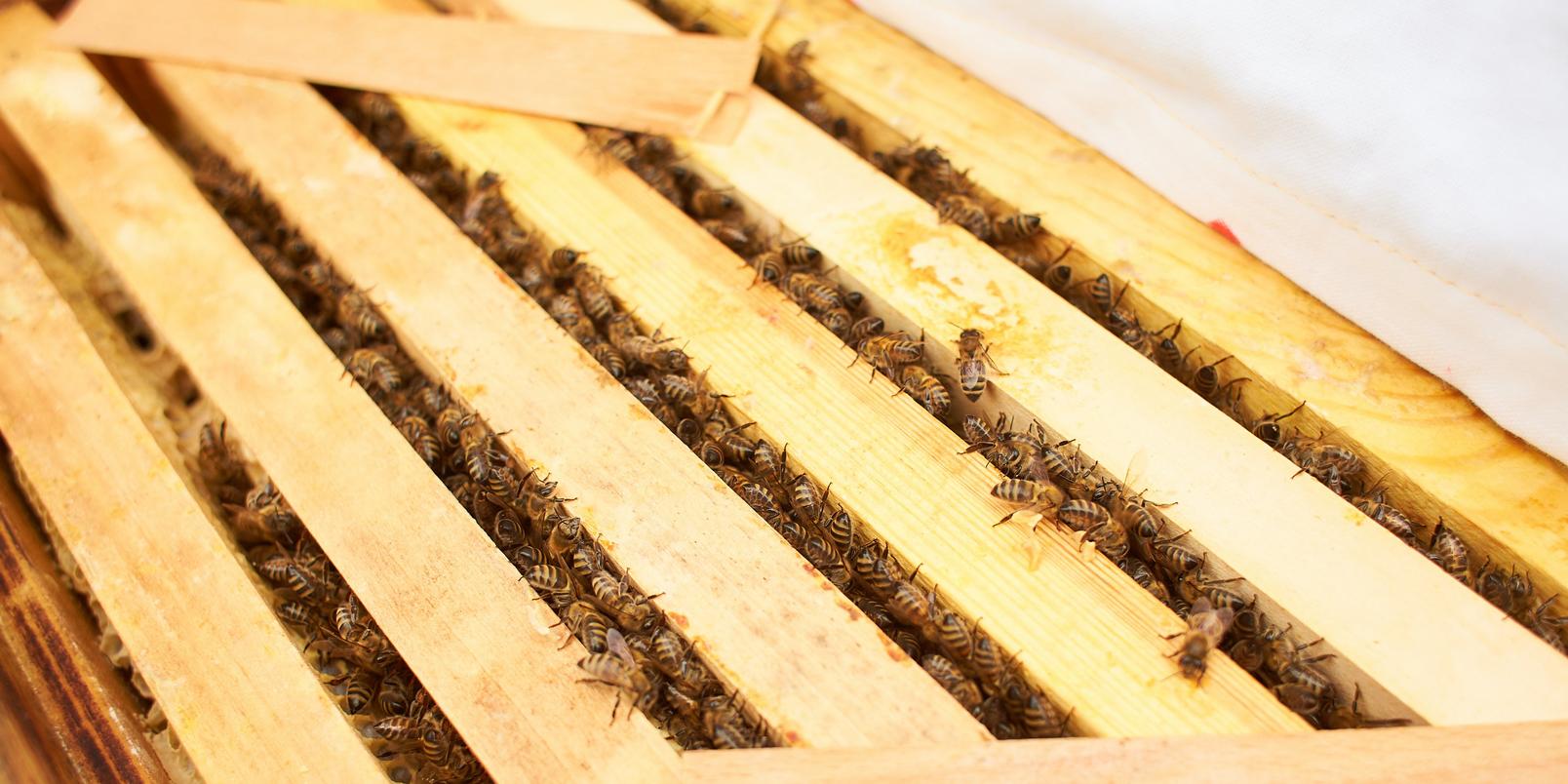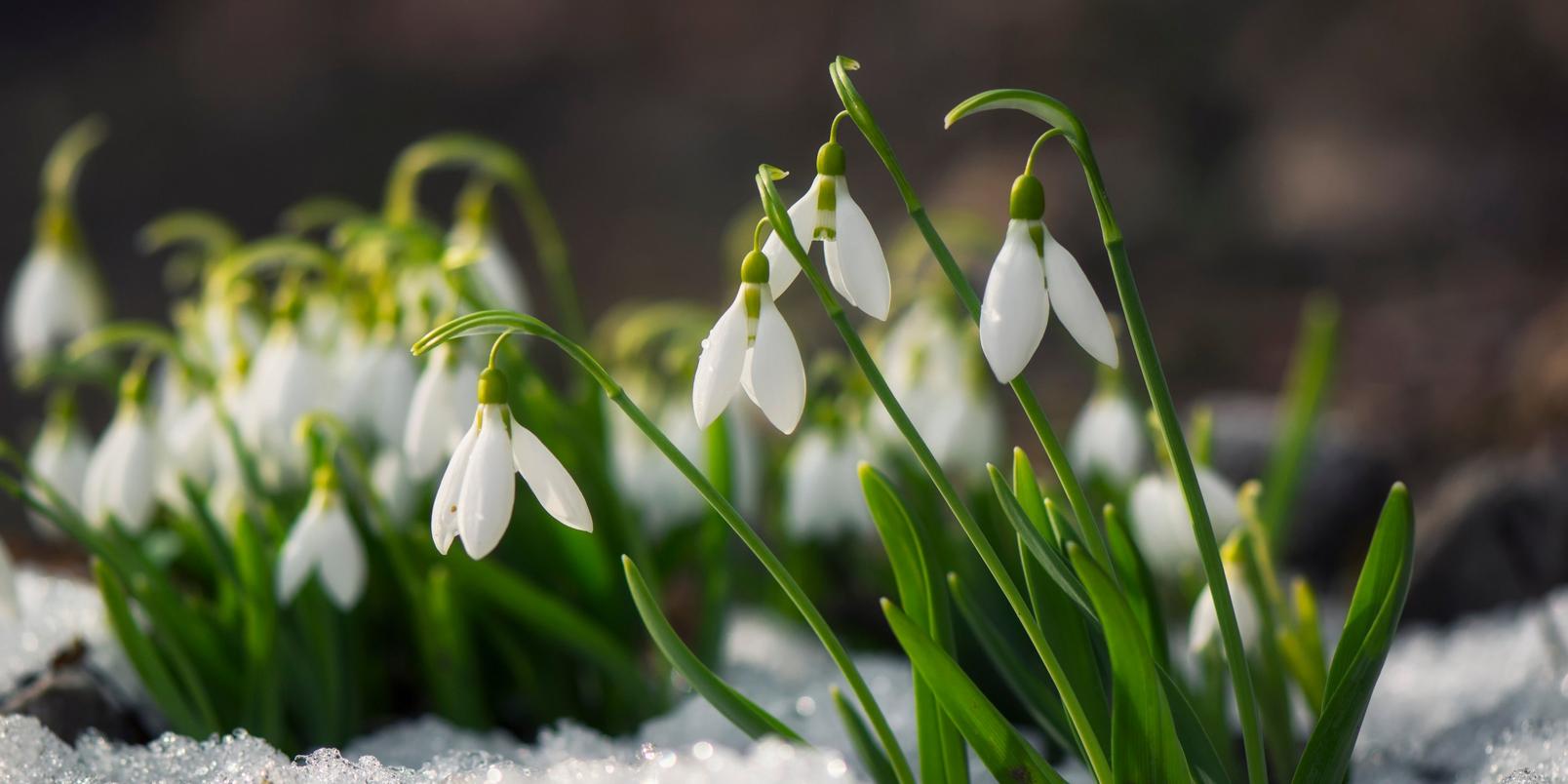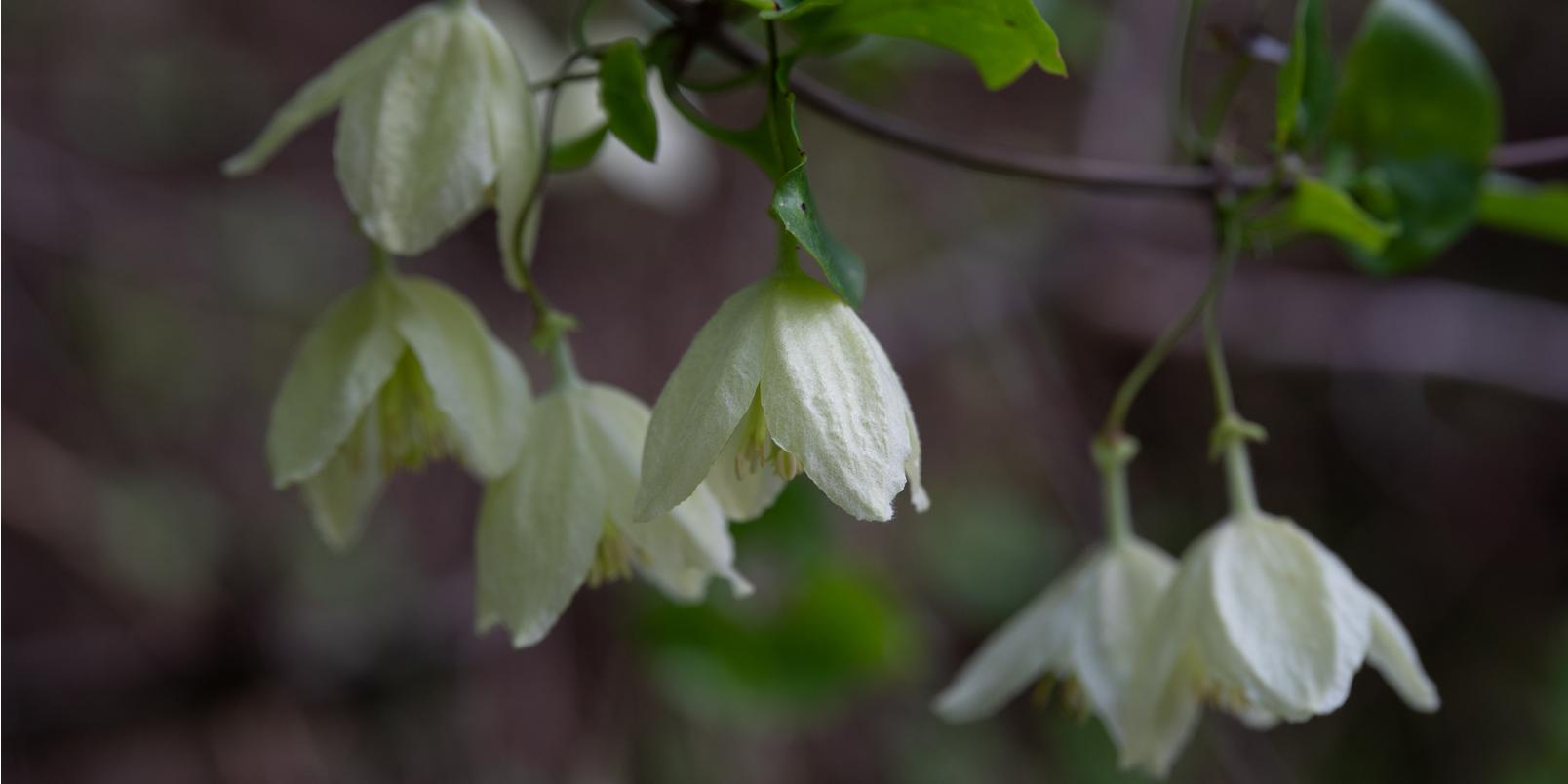Snowy weather? We’re still delivering, please just allow a little extra time
How to helpbees in winter
When the winter weather comes, there’s nothing better than giving the garden a little refresh. Just because the temperature drops, it doesn’t need to mean your garden looks dull. Even in winter, it’s possible to banish the blues with some beautiful winter flowers in a range of colours. And it’s not just yourself you’re helping.
Keeping winter flowers also helps to keep the garden ecosystem in full flow. You may not see them as much, but vital pollinators like bees are still around at this time of year. And a thriving garden can go a long way to helping them throughout winter. Fill your garden with plants for bees to keep them healthy and happy throughout the colder months. In this guide, we take a look at some of the best plants and flowers you can plant in the winter months to help the bees out.

Where do bees go in the winter?
We often think of bees as disappearing completely once summer is over, but this isn’t necessarily the case. In winter, certain bees, like honey bees, simply retreat to their hive and try to stay warm – but they don’t hibernate. They join a winter cluster with their companions to ensure they can survive the colder weather. To make it through, these bees must be stocked with enough food to survive the winter months.
Bumble bees, on the other hand, do not form colonies for the winter. Instead, only the queen hibernates until spring while the rest of the colony dies out. The queen will mate and then take refuge in a safe area to spend the winter in. This means she too must have plenty of food to get through the colder period.
For those bees that aren’t hibernating, when the temperature rises a little, they’ll still stick their heads out of the hive to look for some nectar. The problem is that many flowers that have been prevalent throughout spring and summer will have died in the colder weather. This means there’s less food for bees to find, so planting winter flowers that provide that food source for them is important for keeping bees in top shape all winter.

Best winter plants for bees
Hellebores
Hellebores are great plants for bees, thanks to their stunning open flowerheads allowing bees to make a beeline straight for the nectar. These popular winter flowers often feature in winter and Christmas decorations in the home.
Bees especially love single-flowered hellebores. If they’re double, some of the nectar and pollen parts of the plants turn into petals instead, so there’s less for the bee to eat.
Often called the ‘stinking hellebore’ due to the smell that emanates from its crushed leaves, despite its name, it is a wonderful winter plant for bees and can brighten up any garden in the colder months.

Crocus
Crocus flowers are a colourful addition to any garden and are loved by bees. Make sure to plant in a sunny spot so they can fully open enough for bees to get nectar.
Not only do crocuses provide tasty treats for the bees, but their curvaceous flowerheads add a delicate touch to a winter garden. Rich purple crocus plants, such as the Vanguard or Ruby Giant variety, will pop amongst pure white snowdrops in parks or a garden. Providing plenty of pollen and nectar, crocuses are some of the best plants for bees.

Snowdrops
The fairy tale plant of a winter garden, snowdrops are often found on the grounds of woodlands or in garden borders. Happy to live in shade, these beauties are a winter flower treat to us as well as bees.
Creating drifts of white flowers through woodlands and garden areas, snowdrops are perfect for feeding bees in winter. Opt for single-flowered varieties like Galanthus nivalis to keep the bees happy.
Snowdrops get their name from their nodding, fragrant flower heads dotted amongst their narrow green leaves. A sprinkling of winter snowdrops come alive in the frost and can transform any garden into a winter wonderland.

Winter Clematis
A winter clematis is a popular climbing plant. They look wonderful sprouting up fences, pergolas, or houses. Grow yours in an archway or doorway to make the most of their sweet scent.
Clematis cirrhosa variety, also known as ‘Jingle Bells’ thanks to their bell-shaped heads, flower between December and March and can provide great plants for bees over the winter months.
Enjoy the splash of creamy-white petals against the rich green foliage and sweet scent. These evergreen bloomers have a lemony scent to attract bees.

Other ways to help bees in winter
If you want to do more to help our gardening friends, there are plenty of things you can do to help with feeding bees in the winter. Our top tips include:
Plant a range of plants for bees
Having a variety of pollen-rich flowers of different shapes and flowering patterns will help ensure your garden is as suitable as possible for different types of bees. Some bees have long tongues, so they favour deep flowers like foxgloves.
Keep lawn weeds
Some species of lawn weeds, like dandelions and clovers, are excellent at attracting bees.
Avoid pesticides
Insecticides that contain neonicotinoids kill bees. It’s important to check the label to avoid hurting your gardening partners.
Build a bee home
Create a safe space for bees and add water and food so that they can shelter in from the cold weather. Place this in a shed or outer building to protect them from frost. If placed outside, make sure the entrance points downwards so the bees are protected from the rain.
BEE FRIENDLY BUNDLE
If you can’t make your own bee house but don’t want the bees to miss out, don’t worry! Our Bee Friendly Bundle contains a pre-made solitary bee house that’ll be perfect for the V.I.Bees. It also comes with a lavender plant (which pollinators love) in a lovely ceramic pot to help bring bees to your space.
Sadly, bees are under threat of extinction, so it’s important that we do everything we can to help these majestic and vitally important creatures, particularly when food is harder to come by in the winter months. It’s easy to build a bee haven in your garden when you understand what wildflowers bees love. Learn more about how you help your local bees on our Beehive hub.
